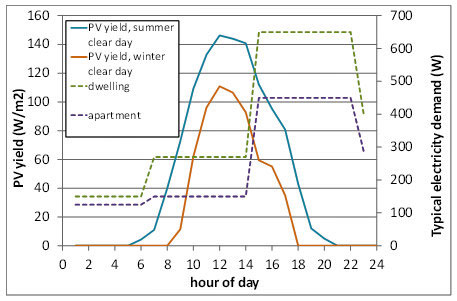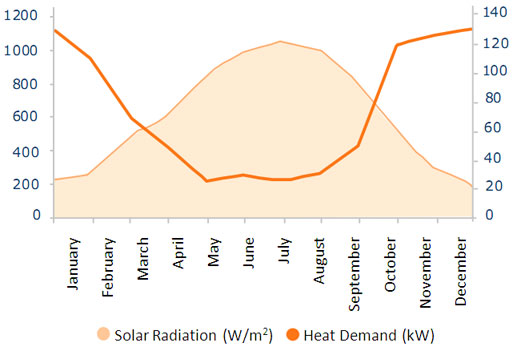The Energy Hub Challenge
The share of renewable energy needs to increase drastically
To achieve low energy or even energy neutral districts, the share of on-site renewable energy needs to increase drastically over present levels. However, a complicating factor is the fluctuating character of the energy supply from a wind turbine or a photovoltaic (PV) field.
As a result, most of the time the supply from renewables will be either too large or too small to cover the energy demand of the moment. As an illustration, the solid lines in the graph below show the electricity supply from PV panels, while the dashed lines represent domestic electricity demand.

Mismatch between PV generated electricity and hourly electricity demand.
The mismatch between supply and demand plays on hourly level but also on seasonal level and it plays for heat as well as electricity.

Mismatch between solar radiation and annual heat demand.
The mismatch may be solved by a combination of thermal storage and electrical storage, and intelligent control of equipment. The latter may entail postponing the operation of heat pumps or washing machines in times of electricity shortage, as long as the desired temperature range (for heating or cooling) is respected.
Thermal storage and smart control are key elements of the E-Hub project which aims to maximise the amount of renewable energy at the district level.
An important element is acceptance of such an advanced energy control system by the users. The development of new business models and service concepts that are attractive to both energy suppliers and end-users is crucial.
The E-Hub challenge is to control the integration of sustainable technologies, to recycle heat from summer to winter, to reduce waste and to work in balance with nature.
